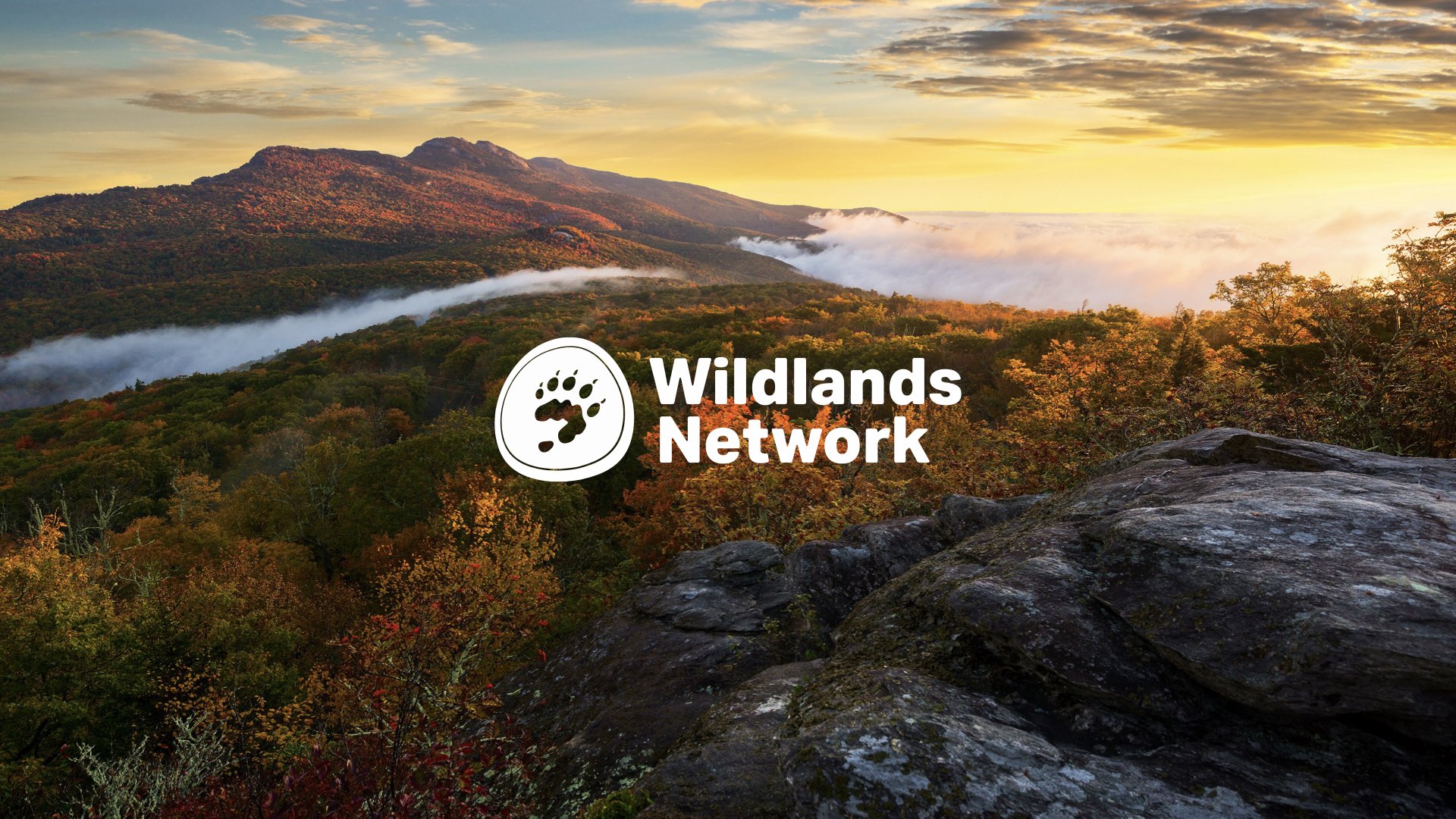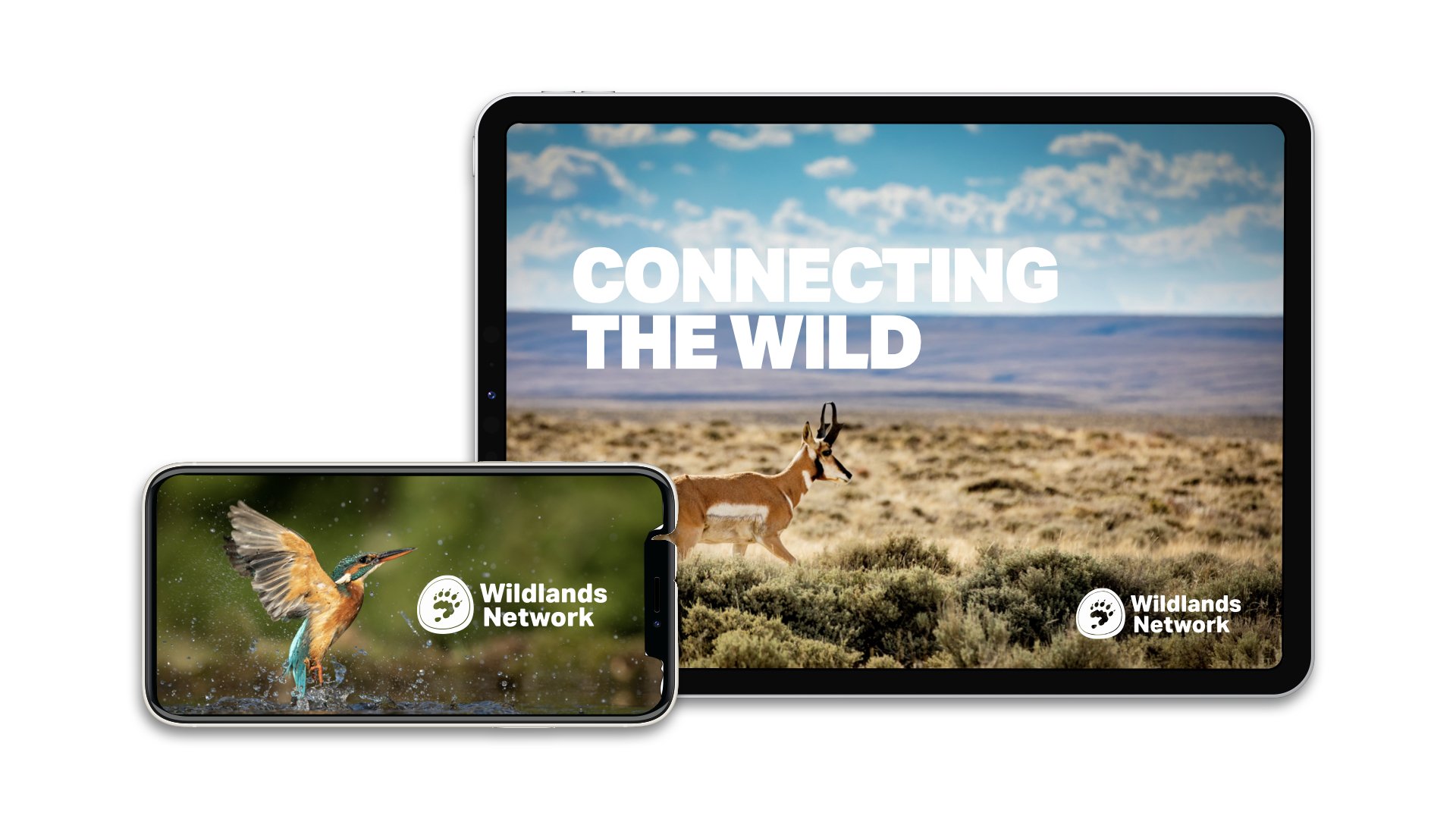A Step in Our Evolution: Wildlands Network’s Refreshed Logo
“The land has given much to us - it’s time we give something back. What we seek is a path that leads to beauty, abundance, wholeness and wildness; nothing less than the full flowering of the natural biological diversity of North America. We welcome all those who share this audacious vision and passion.”
- Wildlands Network Founders, “Wild Earth” Special Issue
Our History
In 1991, prominent conservation biologists and environmental activists founded Wildlands Network (called Wildlands Project at the time) with a new vision for a divided continent: a landscape connected from Canada to Mexico. Thinking big in space and time, they saw a vision for all species to move freely across the continent amid human development by protecting key habitats to reconnect three distinct Wildways.
Protecting core habitats, corridors between them, and carnivores among them was at the heart of their efforts.
Left: A wolverine steps forward in its journey to find connected habitat. Photo by: Adobe Stock, Erik Mandre. Right: Paw prints left in the snow from a wolverine’s voyage. Photo by: Adobe Stock, Sanderstock
The Path of the Wolverine
In 2012, a photographer in Colorado captured a sight unseen for a century – a wolverine trekking across the state’s cold, high Rocky Mountains. Biologists had collared this wolverine just south of Grand Teton National Park and watched him travel 585 miles between Wyoming and Colorado in a matter of months. In that process, he managed to survive across one interstate and eight highways. By 2016, he had covered a vast 2,000 miles across the country before he was shot and killed in North Dakota.
This male was one of ~300 wolverines now estimated to live in the lower 48 states, a number that has slowly grown since humans extirpated them from the contiguous U.S. in the early 1900s. As the resilient species continues to rise from the ashes, it needs help—it needs connected landscapes in a fragmented world to survive.
That space between wildlands is where we have centered and continue to focus much of our efforts.
The wolverine's path, persistence, and resilience were inspirational. This carnivore, which traverses hundreds of miles a year, perfectly represents the importance of large-landscape connectivity. Its paw print was soon emblematized as a central feature of our Wildlands Network’s logo.
Most importantly, our founders recognized that we are not alone in this world. We are part of a diverse, wild network of people, wildlife, plants, and lands bound together by intrinsic interdependence. From this place, our organization was born, a notion reflected in each iteration of our logo.
Our Evolution
Over the last 30 years, Wildlands Network has stood by these values and connected vision, fighting for wide-ranging wild landscapes across borders, roads, policies, and communities to protect and restore biodiversity and address the climate crisis. Since 1991, we’ve supported hundreds of species, wildlife crossings, research projects, and innovative policies.
With a spirited love for the wild and a devout approach to its protection backed by science, research, policy, and community engagement, our founders’ vision is becoming a reality with every step we take.
Today marks a new step, one that symbolizes both our past and our evolution: a refreshed, modernized logo.
Inspired by wildlife crossings in California, the new icon symbolizes the connectivity of wildlands and safe passage for wildlife.
Photos by: Tim Noviello / Video by: Pathways for Wildlife
The refreshed logo incorporates both our vision and our approach. The wolverine’s paw print remains, a continued symbol of an iconic large carnivore’s vast movement needs that propel our work toward landscape-scale habitat connectivity. The paw print is now enclosed by the frame of light at the end of an underpass, an ode to safe passage between connected landscapes granted to a wide range of species by a wildlife crossing.
Wildlife crossings represent reconnection across fragmented landscapes by facilitating a 90% reduction in wildlife fatalities when properly sited.
While our historical logo represents an important chapter in our organization’s life, we are evolving with the landscape of modern design principles.
This refreshed logo is a step that aligns our visual identity with our intention to continue to be a dynamic conservation leader centered around a love for the wild, connectivity, innovation, inclusivity, and impact.
Moving Forward
As we look to our future, we are committed to adapting to a rapidly changing world. This logo can evolve with us, the knocked-out paw print leaving room for any changing landscape or animal to shine through.
With the tenacity of the wolverine, we move forward to deepen our impact, continuing to bring the vision of a connected, whole, wild landscape to life, one step at a time. We invite you to join us on this next step of our journey.








